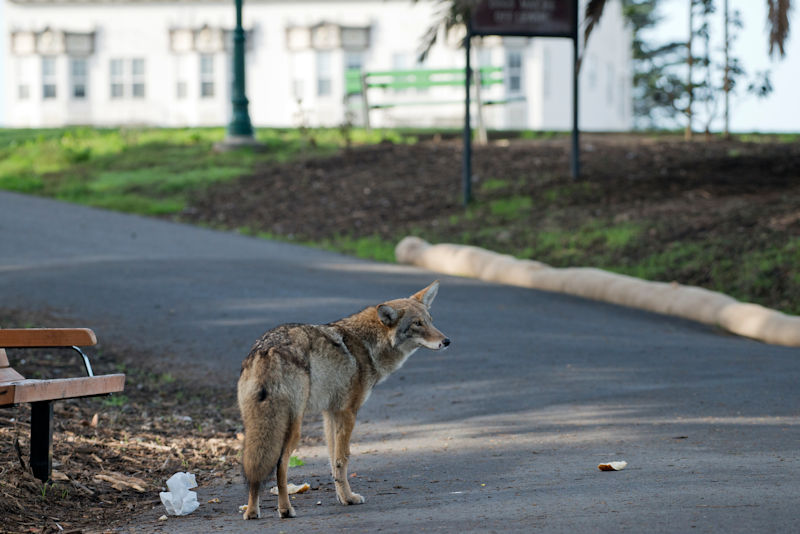In the quiet suburban streets of Baltimore County, Maryland, an unsuspecting man and his dog became the victims of an extraordinary encounter in October 2021 – an attack by a rabid coyote. This incident serves as a poignant illustration of the intricate challenges that arise when wild animals are pushed closer to human population centers. The consequences of failing to manage these populations effectively are far-reaching, prompting a closer look at the role of ethical trapping as the most humane and practical tool for addressing such challenges in populated areas.
The increasing encroachment of urban development into natural habitats has become a defining feature of the modern world. As cities expand, green spaces diminish, and wildlife finds itself navigating an increasingly complex landscape where human and animal territories intersect. The Baltimore County rabid coyote incident is not an isolated event but rather emblematic of a broader trend that demands attention and effective solutions.
Failing to manage wild animal populations in the wake of urbanization can have severe consequences. The incident involving the coyote is a stark reminder that unchecked encounters between humans and wildlife can result in harm to both parties. The proximity of wild animals to residential areas raises concerns not only for public safety but also for the well-being of the animals themselves, who may find themselves in unfamiliar and stressful situations.
Enter ethical trapping, a method that seeks to strike a balance between human needs and the preservation of wildlife. In populated areas like Baltimore County, where safety is paramount, ethical trapping emerges as a humane and targeted approach to managing wildlife.
When compared to alternative methods such as shooting with firearms or poisoning, ethical trapping stands out as a more viable solution in populated areas. Shooting, while seemingly efficient, poses inherent risks in residential neighborhoods. Stray bullets can lead to unintended consequences, endangering not only humans but also other animals and property. The potential for accidents makes firearms a less desirable option for animal control in areas where public safety is a top priority.
Similarly, poisoning poses a host of problems when used for wildlife management. It not only risks the lives of unintended targets but also has the potential to contaminate the environment, affecting other wildlife, domestic animals, and even humans. The indiscriminate nature of poisoning makes it an ethically and environmentally questionable method for controlling animal populations.
Ethical trapping, on the other hand, offers a more precise and controlled approach. Traps can be strategically placed based on careful assessments of animal behavior and movement patterns. This targeted method allows for the capture of specific individuals causing issues, addressing the root cause of conflicts without indiscriminately affecting the entire population.
The question arises: Did the government fail its citizens by allowing this incident to happen? Addressing this question requires a nuanced perspective. While government agencies play a crucial role in wildlife management and public safety, the challenges presented by urbanization and wildlife encounters are complex and multifaceted.
Governments must strike a delicate balance between promoting urban development and safeguarding the well-being of citizens and wildlife. In some cases, the increasing proximity of wild animals to human population centers may be an unintended consequence of rapid urban expansion, with government agencies struggling to keep pace with the challenges presented by shifting ecosystems.
The role of government in managing wildlife encounters involves a combination of proactive measures and responsive strategies. Ethical trapping can be integrated into comprehensive wildlife management plans to address specific issues without resorting to more aggressive measures. However, it requires collaboration between government agencies, wildlife experts, and local communities to implement and sustain such solutions effectively.
In conclusion, the rabid coyote incident in Baltimore County shines a spotlight on the complex relationship between urbanization, wildlife management, and public safety. The consequences of pushing wild animals closer to human population centers demand thoughtful and humane solutions. Ethical trapping emerges as the most practical tool for addressing these challenges in populated areas, providing a targeted and controlled approach that minimizes harm to both animals and humans.

